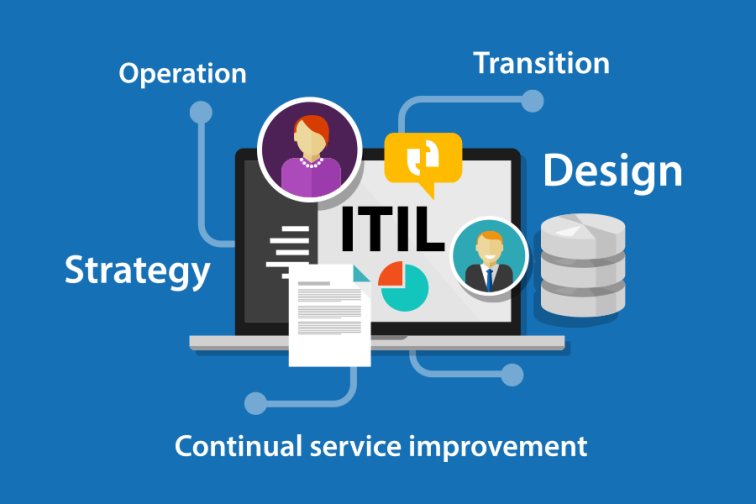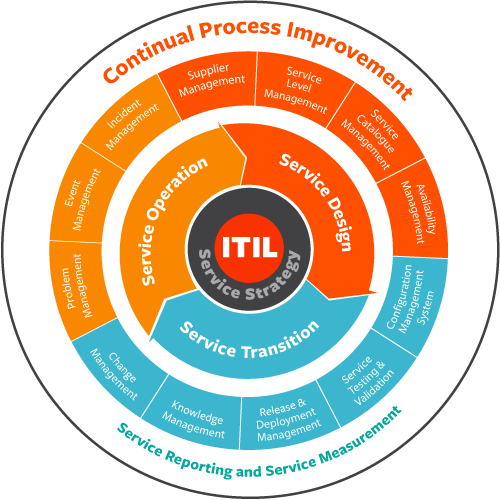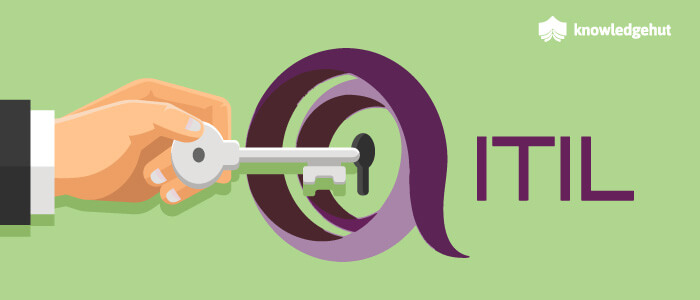Hello there!
I’ve learned so many standards, laws and best practices from one of our modules in my university. To name some, ISO 9001, ISO 14001, ISO 27001, ISO 31001, HIPPA, ITIL, PCI DSS, and GDPR. ITIL module was something that kept getting interesting day by day. If you still don’t know what ITIL means, It’s time for us to learn more about it.

ITIL stands for Information Technology Infrastructure Library. Wikipedia defines ITIL as,
ITIL (formerly an acronym for Information Technology Infrastructure Library) is a set of detailed practices for IT service management (ITSM) that focuses on aligning IT services with the needs of business.
OK! So what does that mean? What does it have to do with my IT career? I’ll answer those questions and more below.
What is ITSM?
Service is when it delivers value to the customer by facilitating outcomes that customers want to achieve without the ownership of the specific costs and risks. Every organization delivers some kind of a product or a service. IT Service Management refers to the sum of activities directed by policies, procedures or processes that are performed by an organization. Simply it means the management of those services.
Where does ITIL fit in?
For every product or service, the ITIL framework helps to manage delivery, support and customize. ITIL is a systematic approach to high quality IT services. ITIL is a framework with well-defined terms.
ITIL is now in its third iteration, known as ITIL V3. It provides much clearer guidance on how to provide services and keep tactical and operational guides. ITIL V3 gives more performance to strategic ITIL guidance relevant to senior staff. ITIL is aligned with ISO 20000 which also stands for IT service management.
ITIL framework has 5 stages and contains a total of 26 processes and 4 functions. The service lifecycle of ITIL is as follows.
- Service Strategy
- Service Design
- Service Transition
- Service Operation
- Continual Service Improvement

Service Strategy
As the initial phase of the ITIL framework, service strategy helps to design, develop and implement service management as organizational abilities and strategic assets as well. Service strategy will question about,
–> What is the organization going to provide?
–> Can the organization afford it?
–> Can it provide enough services?
–> What are its perspectives? (Vision, Mission, Strategic goals)
SS contains 4 activities.
- Deploy the market – Take a look at what are the business needs
- Develop the offerings – Develop the strategies to satisfy business needs
- Develop strategic assets – Focuses on using services to create business value
- Prepare for execution – Select the appropriate strategy to deliver service
Service strategy has 5 processes.
- Service portfolio management
- Demand management
- Financial management
- Strategy management
- Business relationship management
Service Design
Service design provides a blueprint for the services. The design of appropriate and innovative IT infrastructure services happens in this phase. It translates strategic plans and objectives and creates the design for execution through Service Transition and Service Operation. The main target audience of SD is service managers and service provides. SD will question about,
–> How to provide?
–> How to build?
–> How to test?
–>How to deploy?
Out of 26 processes, Service design contains 8.
- Availability management
- Capacity management
- Service catalog management
- Service level management
- IT service continuity management
- Information security management
- Supplier management
- Design coordination
Service Transition
Service transition manages the transition of a new or changed service. It sets customer expectations and enables release integration. ST ensures all changes to the service management processes are carried out in a coordinated way and minimizes risk.
ST consists of 6 processes.
- Transition planning and support
- Change management
- Service asset and configuration management
- Release and deployment management
- Service validation and testing
- Knowledge management
Service Operation
As the 4th phase of the lifecycle, service operation ensures that services are being provided efficiently and effectively as per discussed in Service Level Agreements, monitoring services, resolving incidents, fulfilling customer requests and carrying out operational tasks are included in SO.
Service Operation consists of 5 processes and 4 functions.
Processes –
- Event management
- Problem management
- Incident Management
- Request fulfillment
- Access management
Functions –
- Service desk
- Technical management
- IT operation management
- Application management
Continual Service Improvement
CSI focuses on process owners and service owners. It ensures that service management processes continue to support the business. It deals with measures to be taken to improve the quality of services by learning from past successes and failures.
CSI contains the 7th step improvement process.
- Define what you should measure
- Define what can you measure
- Gather the data. Who? When? How?
- Process the data. Frequency? Format? System? Accuracy?
- Analyze the data. Relations? Trends? Targets met?
- Present and use information, assesment summary, action plans etc.
- Implement corrective action

That is all about the lifecycle of ITIL. Let’s discuss some of the advantages and benefits of ITIL.
- Stronger alignment between IT and the business
- Greater visibility of IT costs and assets
- Improved service delivery and customer satisfaction
- Reduced costs through the improved use of resources
- Better management of business risk and service disruption or failure
The goal of ITIL is to improve the specialized ability of the process, people, suppliers, and technology which supports the business service.
What does ITIL have to do with you?
ITIL remains to be the best industry standard best practice framework for supporting, managing and aligning IT service management with the needs of the business. Many organizations invest in certification sponsorship programs to help employees get ITIL certified. It is widely adopted among many IT organizations of small to large scale sizes.
here’s why you should consider getting an ITIL certification.
- Higher paying opportunities
- A sharper skillset
- A chance to stand out among the rest
- Prepared for the future
- Ability to the jump into the job role that you really want
- Flexibility
- Gain knowledge and credibility
- Low-risk effort
That’s all about ITIL. Hope you gain some knowledge and now has an idea of what ITIL is. If you find this interesting, you should probably get certified. You know what coming for you if you do so 😉
Keep in touch for more cool stuff. Cheers!
